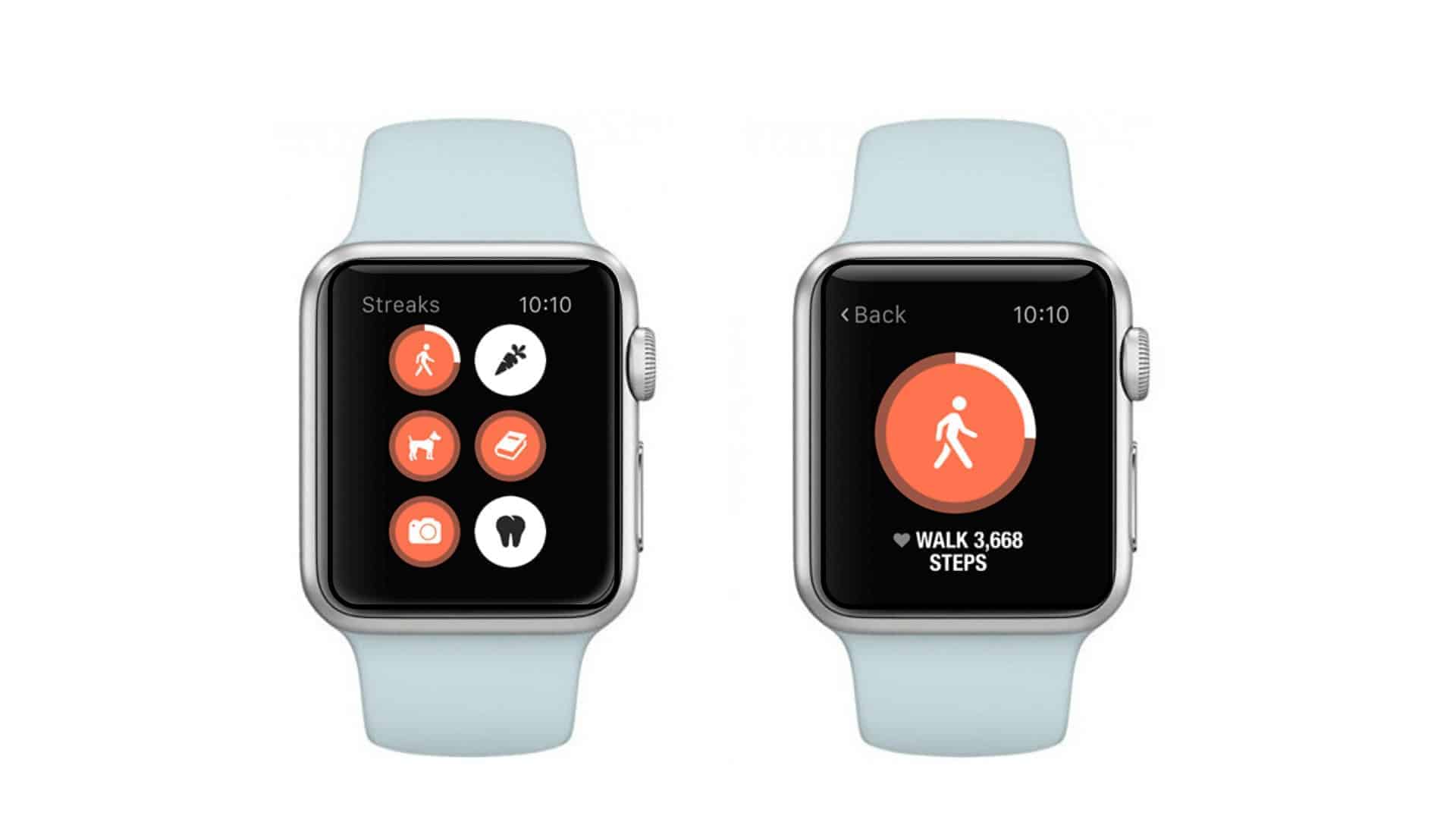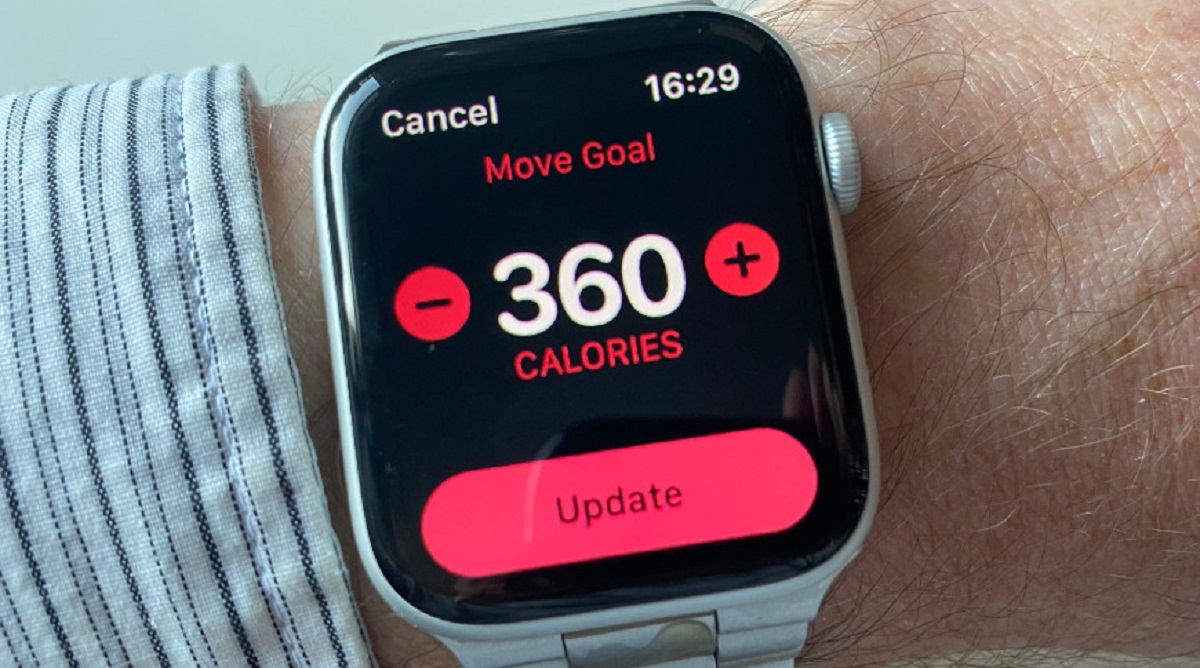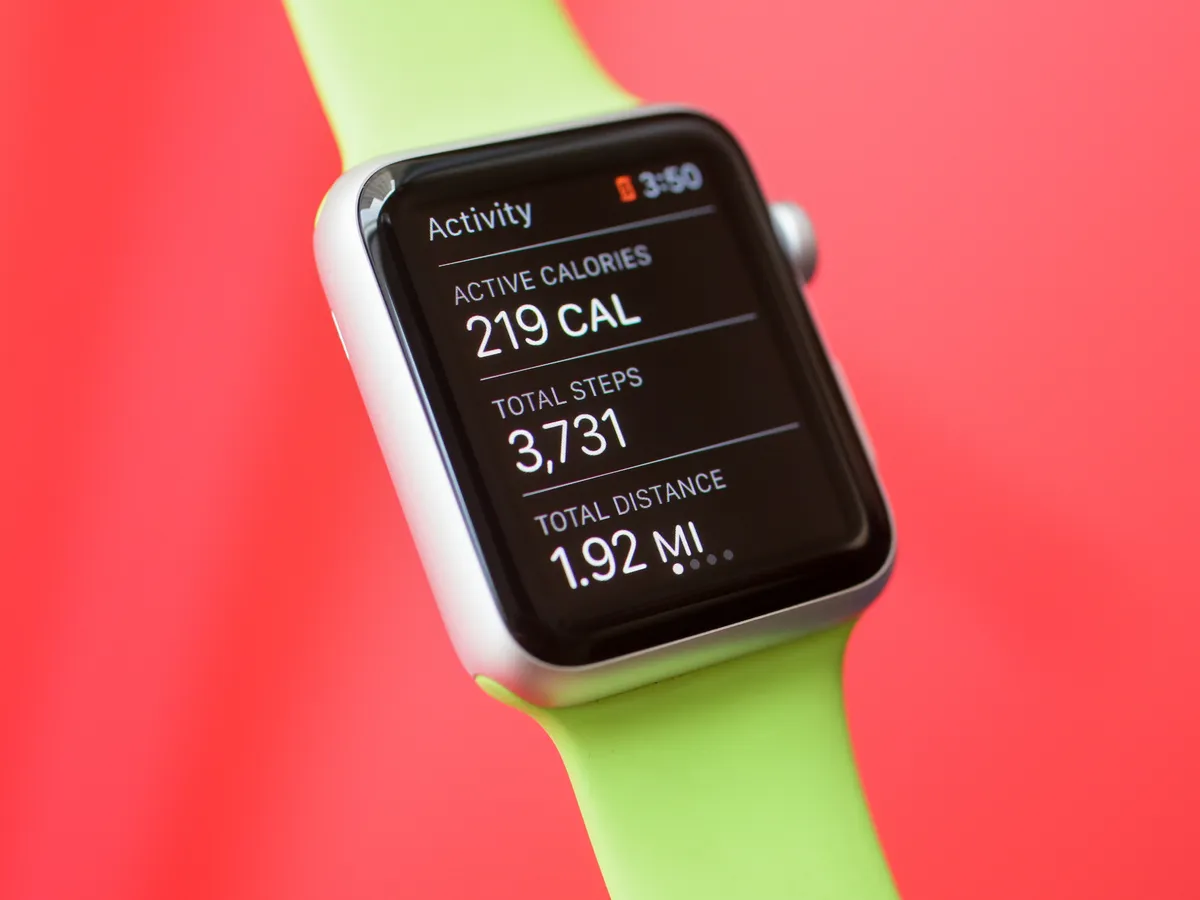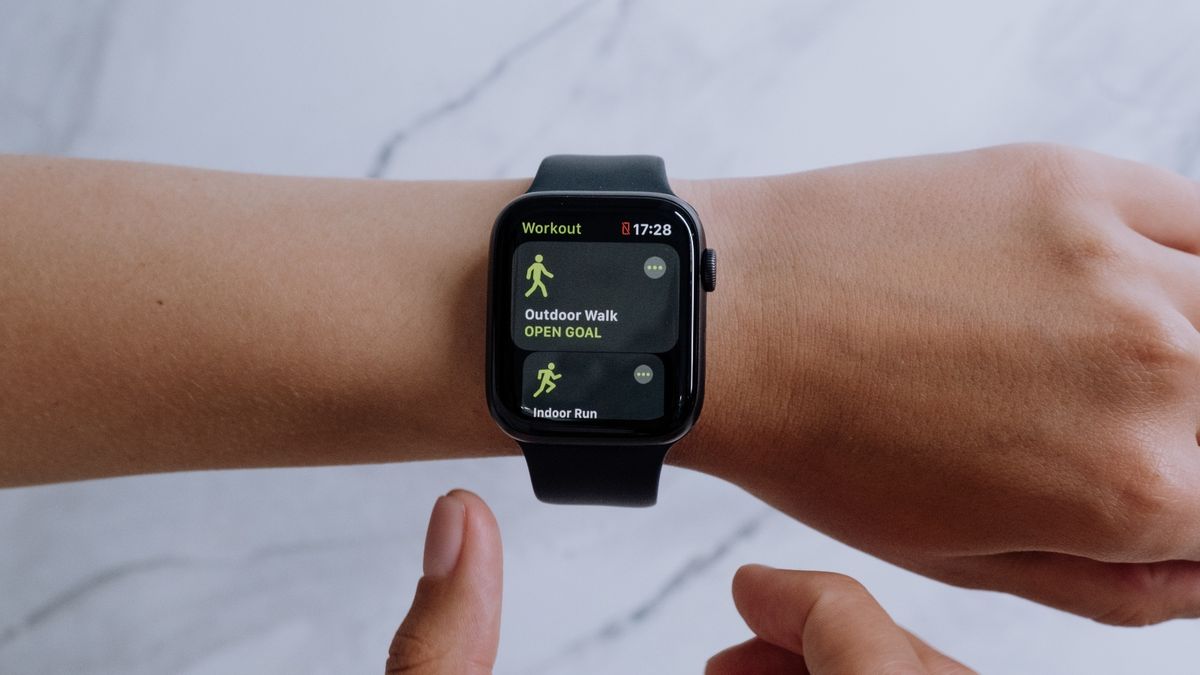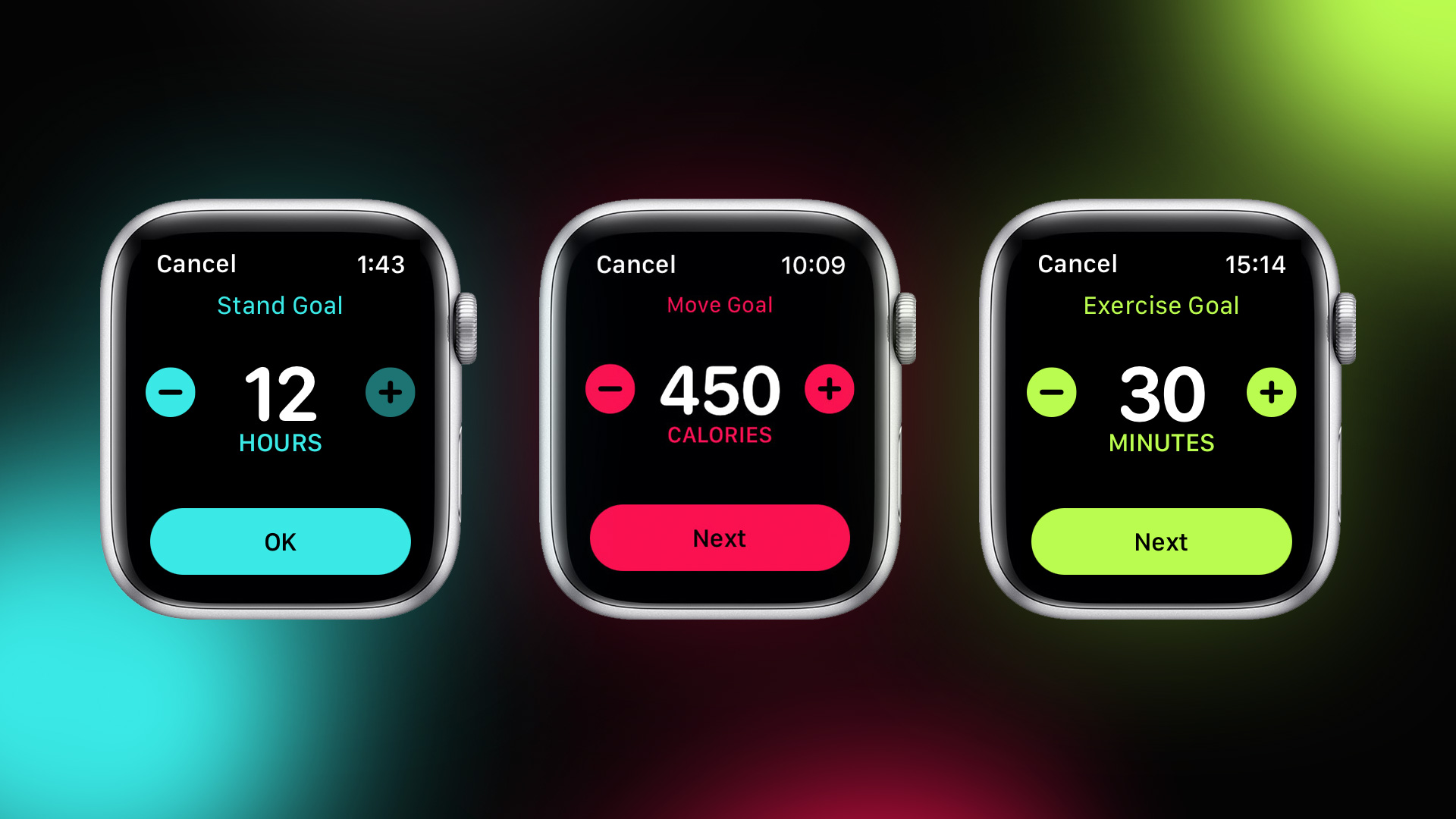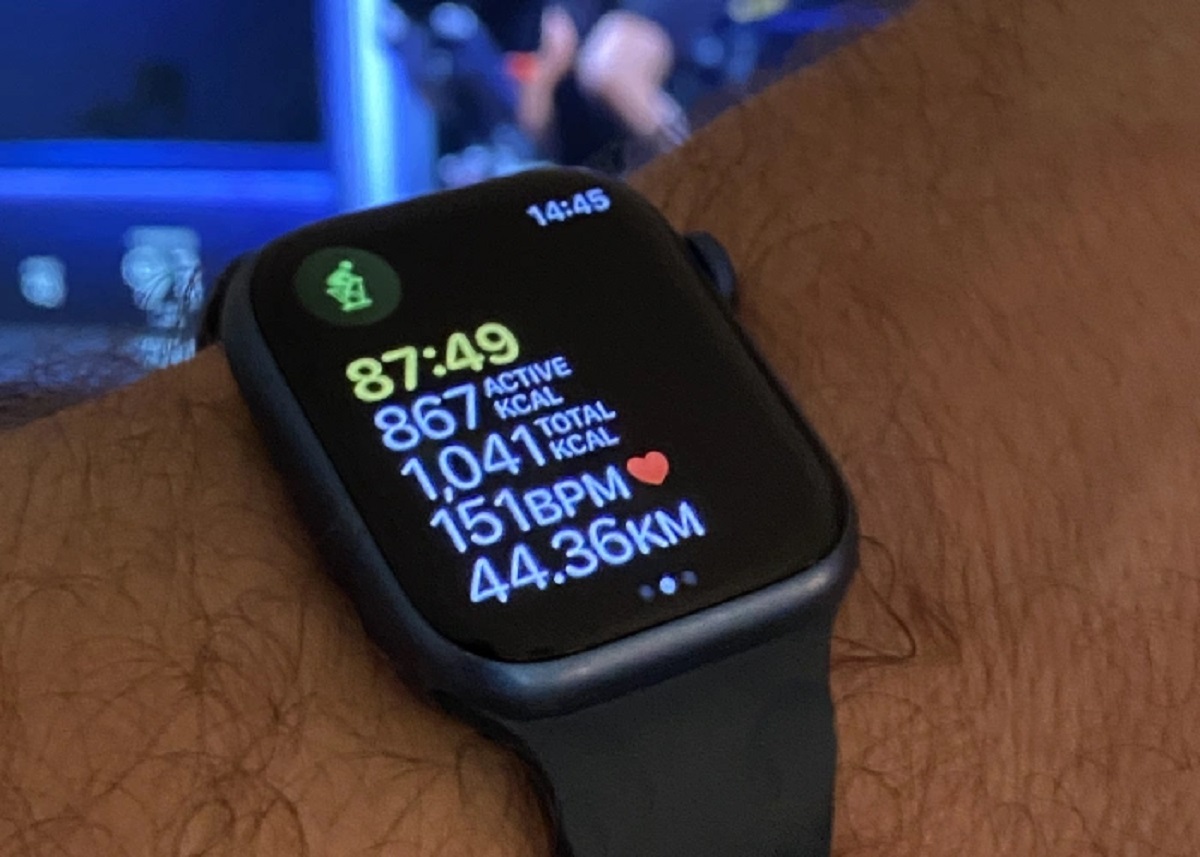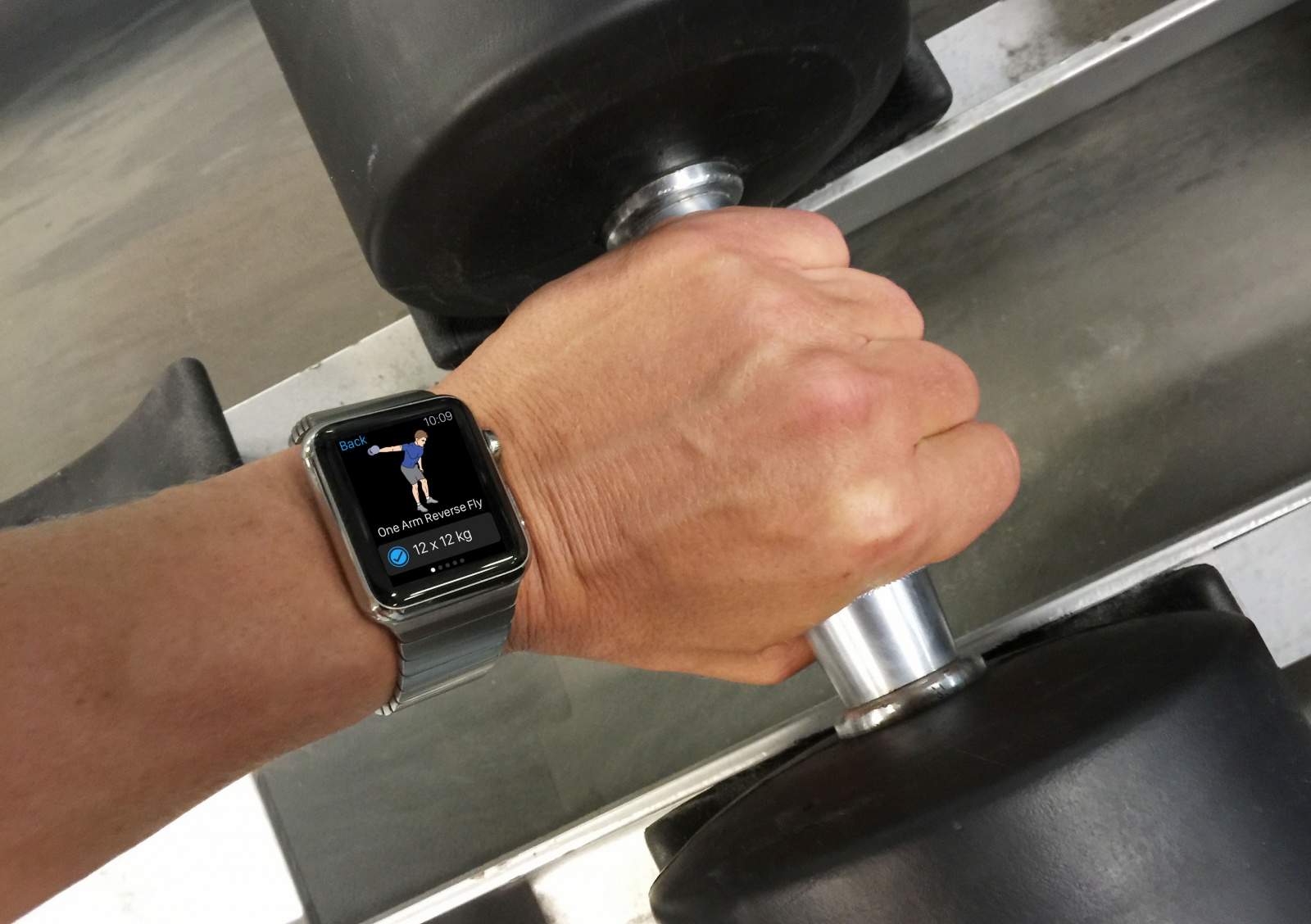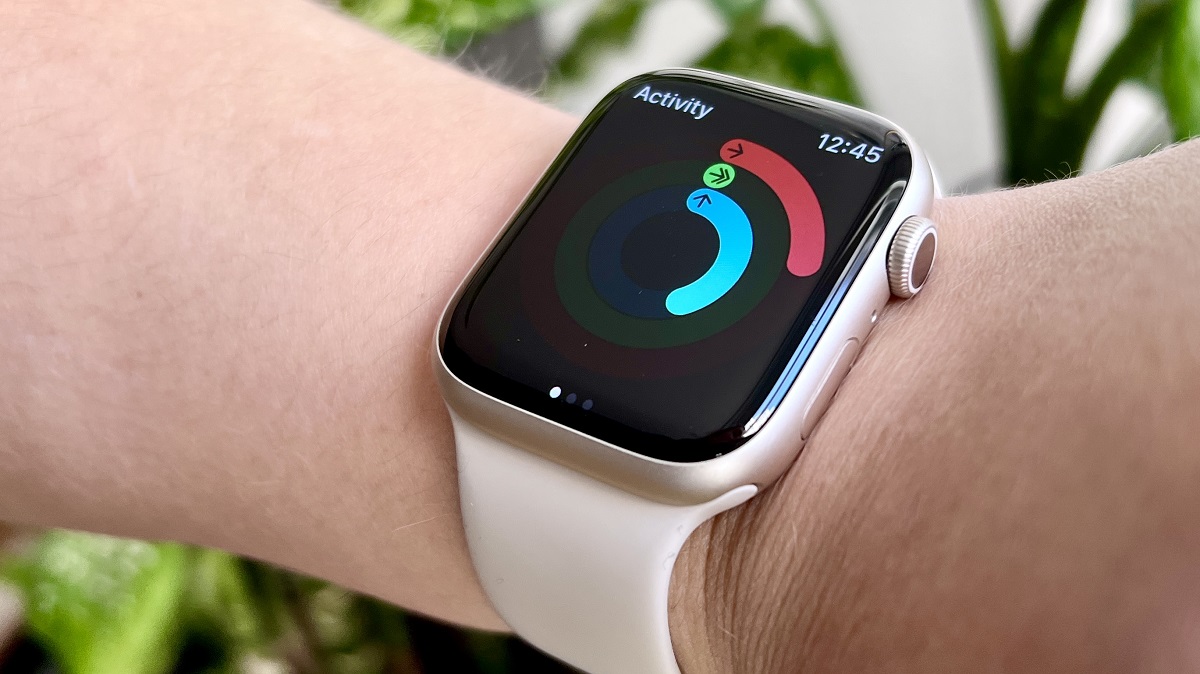Introduction
Changing your weight on your Apple Watch is essential to ensuring that the fitness and health tracking features accurately reflect your progress. Whether you’ve gained a few pounds or shed some weight, updating your weight information is a simple process that can be done directly on your Apple Watch as well as on your iPhone through the Apple Health app.
With your Apple Watch, you can conveniently track your workouts, monitor your heart rate, and keep an eye on your activity levels throughout the day. However, for these features to provide accurate data and insights, it is crucial to regularly update your weight. By doing so, you enable your Apple Watch to calculate calorie burn and offer more precise metrics tailored to your specific goals.
In this article, we will guide you through the step-by-step process of changing your weight on your Apple Watch and syncing the updated information with your iPhone. By the end, you will have the knowledge and confidence to keep your Apple Watch data up to date and enjoy a more personalized and accurate fitness tracking experience.
Step 1: Launch the Activity app on your Apple Watch
The first step to changing your weight on your Apple Watch is to launch the Activity app. This app is designed to help you keep track of your daily activities and monitor your progress towards your fitness goals.
To open the Activity app, press the Digital Crown on your Apple Watch to access the home screen. Look for the colorful icon with three concentric blue, green, and red rings, and tap on it to launch the app.
Once you have entered the Activity app, you will see your activity rings, which visualize your daily movement goals. This screen provides an overview of your progress throughout the day, including your active calories, exercise minutes, and stand hours.
The Activity app is the gateway to various features and settings related to your fitness tracking. It allows you to not only change your weight but also view your workout history, track specific activities, share your achievements with friends, and compete with others through challenges.
Now that you have successfully launched the Activity app on your Apple Watch, you are ready to proceed to the next step and change your weight to ensure accurate fitness tracking.
Step 2: Tap on the My Watch tab at the bottom
After launching the Activity app on your Apple Watch, the next step in changing your weight is to tap on the “My Watch” tab at the bottom of the screen. This tab provides access to the settings and preferences for your Apple Watch, allowing you to customize various aspects of your device.
To navigate to the “My Watch” tab, simply swipe left or right on the touch display of your Apple Watch until you reach the tab. It is located at the bottom left corner of the screen, represented by an icon that resembles the outline of a watch.
When you tap on the “My Watch” tab, a new screen will appear, displaying a list of different options and settings. This is where you can manage the configurations and preferences for your Apple Watch, including notifications, app layout, connectivity, and more.
By accessing the “My Watch” tab, you gain control over the settings that impact your overall Apple Watch experience. It allows you to tailor your device to your specific needs and preferences, ensuring that it works seamlessly with your lifestyle and enhances your daily activities.
Now that you have tapped on the “My Watch” tab, it’s time to move on to the next step and proceed with changing your weight on the Apple Watch.
Step 3: Scroll down and tap on Health
After tapping on the “My Watch” tab on your Apple Watch, the next step in changing your weight is to scroll down and tap on “Health”, which is located in the list of options on the “My Watch” screen. This will take you to the Health settings on your Apple Watch.
To scroll down on your Apple Watch, swipe your finger upwards on the touch display. Keep scrolling until you find the “Health” option. It is generally located towards the middle or lower part of the list, depending on the other settings and apps you have installed on your device.
The “Health” option is an important feature on your Apple Watch as it allows you to control your health and fitness-related preferences. It enables you to manage data sources, choose which metrics to track, and input personal information, such as your weight, height, age, and gender.
By tapping on “Health”, you will access a screen where you can modify various health-related settings. This includes granting permissions to apps to access your health data, setting up activity notifications, and configuring the units of measurement for different metrics.
Now that you have successfully scrolled down and tapped on “Health”, it’s time to move on to the next step and make the necessary changes to your weight on your Apple Watch.
Step 4: Tap on Edit in the top right corner
After accessing the Health settings on your Apple Watch by tapping on “Health”, the next step in changing your weight is to tap on “Edit” in the top right corner of the screen. This will allow you to edit your personal information and make changes to your weight.
To locate the “Edit” button, look for a pencil or pen icon in the top right corner of the screen. It is typically positioned next to your profile information or at the top right of the settings page. Tap on this button to enter the editing mode and modify your details.
By tapping on “Edit”, you gain control over the personal information associated with your health and fitness tracking on your Apple Watch. This includes data like your weight, height, date of birth, gender, and more. Updating your weight ensures that the Apple Watch accurately calculates your calories burned and provides more accurate fitness insights.
After tapping on “Edit”, the settings for your weight will become editable. This allows you to input your new weight and make the necessary adjustments. If you’ve recently gained or lost weight, this is the perfect opportunity to ensure that your Apple Watch records this change and reflects it in your activity and health data.
Now that you’ve tapped on “Edit”, you are ready to proceed to the next step and input your new weight on your Apple Watch.
Step 5: Find the Weight section and tap on it
After entering the editing mode by tapping on “Edit” in the top right corner of the Health settings on your Apple Watch, the next step is to find the “Weight” section and tap on it. This will allow you to update your weight information and ensure accurate tracking of your fitness and health metrics.
To locate the “Weight” section, you may need to scroll down on the screen or swipe left or right to navigate through different sections of your personal information. The “Weight” section is typically labeled as such or represented by an icon like a scale or a weight measurement.
Once you have found the “Weight” section, simply tap on it to access the input field where you can enter your new weight. This field may be numeric or may require you to scroll through options to select the appropriate weight measurement units.
By tapping on the “Weight” section, you are taking control of the data that your Apple Watch uses to calculate various metrics like calories burned, activity levels, and workout intensity. Ensuring that your weight information is up to date is essential for accurate tracking and providing you with meaningful insights into your health and fitness progress.
Now that you have successfully found the “Weight” section and tapped on it, you are ready to move on to the next step and input your new weight on your Apple Watch.
Step 6: Enter your new weight using the on-screen keypad
After tapping on the “Weight” section, it’s now time to enter your new weight using the on-screen keypad on your Apple Watch. This will allow you to update your weight information and ensure that your Apple Watch accurately tracks your fitness and health metrics.
On the weight input screen, you will see a numeric keypad or a scrolling option to manually input your weight. The specific design may vary depending on the version of your Apple Watch and the software it is running.
Using the on-screen keypad, enter your new weight by tapping on the appropriate numerical buttons. If your Apple Watch has a scrolling option, locate the weight measurement units and select the appropriate value by swiping up or down on the screen.
Take your time to accurately input your new weight to ensure precise tracking and reliable data analysis. It’s important to note that the Apple Watch typically uses the metric system for weight measurements (kilograms), but you can adjust it to imperial (pounds) in the Health app on your iPhone.
By entering your new weight using the on-screen keypad, you are taking an active step towards maintaining accurate and personalized fitness tracking on your Apple Watch. Your watch will now use this updated weight data to provide you with better insights into your daily activity levels and calorie burn.
Now that you have entered your new weight using the on-screen keypad, it’s time to proceed to the next step and save your changes on your Apple Watch.
Step 7: Tap Done to save your changes
After entering your new weight using the on-screen keypad on your Apple Watch, the final step in changing your weight is to tap “Done”. This will save your changes and ensure that your Apple Watch reflects your updated weight for more accurate fitness and health tracking.
Located on the screen where you entered your new weight, the “Done” button allows you to confirm and finalize the changes you made to your weight information. It is usually positioned in the top right corner of the screen, next to the editing options.
By tapping “Done,” you signify that you have completed the process of updating your weight on your Apple Watch. At this point, your Apple Watch will save the new weight information and use it to calculate various fitness metrics, including calories burned, activity levels, and workout intensity.
It’s important to note that tapping “Done” does not only save your changes on your Apple Watch but also ensures that the updated weight is synced with your iPhone and other devices connected to your Apple ID. This way, your weight information remains consistent across all platforms.
Now that you have tapped “Done” to save your changes, you have successfully updated your weight on your Apple Watch. The device is now ready to provide you with more accurate data and personalized insights into your fitness journey.
Step 8: Open the Apple Health app on your iPhone
Once you have successfully updated your weight on your Apple Watch, the next step is to open the Apple Health app on your iPhone. This will allow you to ensure that the weight change is synced across all your devices and enable you to track your health and fitness progress more effectively.
To open the Apple Health app on your iPhone, locate the app icon on your home screen. It is identified by a white icon with a red heart in the center. Tap on the icon to launch the app.
The Apple Health app serves as a centralized hub for managing your health and fitness data. It allows you to gather information from various sources, such as your Apple Watch, fitness apps, and other health-related services, providing you with a comprehensive overview of your well-being.
By opening the Apple Health app, you gain access to a wide range of features and data related to your health and fitness. This includes tracking your steps, heart rate, sleep quality, nutrition, and much more. It also enables you to view and manage your weight information.
Now that you have opened the Apple Health app on your iPhone, you are ready to proceed to the next step and ensure that the weight change is reflected in your health data.
Step 9: Tap on the Browse tab at the bottom
Once the Apple Health app is opened on your iPhone, the next step is to tap on the Browse tab at the bottom of the screen. This will enable you to explore and access various health and fitness categories, including body measurements, where you will find your weight information.
To locate the Browse tab, look for the icon that resembles a magnifying glass at the bottom of the screen. This tab is designed to help you navigate and discover different sections within the Apple Health app, making it easier to find specific information and insights.
By tapping on the Browse tab, you will be taken to a screen that presents a range of health and fitness categories. These categories are organized based on different aspects of your well-being, such as activity, nutrition, sleep, vitals, and more.
Locating and tapping on the Browse tab allows you to access the Body Measurements category, which is where you can view and manage your weight information. This category encompasses various body metrics, including weight, height, body fat percentage, and more.
Now that you have tapped on the Browse tab, you are ready to proceed to the next step and navigate to the specific Body Measurements section where you can find your weight information.
Step 10: Scroll down and tap on Body Measurements
After tapping on the Browse tab in the Apple Health app on your iPhone, the next step is to scroll down and tap on “Body Measurements”. This section allows you to view and manage various metrics related to your body composition, including your weight.
To scroll down within the Browse tab, use your finger to swipe upward on the screen. As you scroll, different categories and sections related to your health and fitness will appear. Continue scrolling until you find the “Body Measurements” section.
The “Body Measurements” category is designed to provide insights and track various aspects of your physical measurements. In addition to your weight, this section may include measurements such as height, body fat percentage, waist circumference, and more.
By tapping on “Body Measurements”, you will enter a screen that displays all the available metrics. Here, you can view your previous weight recordings and make further adjustments if needed. This ensures that your weight information remains up to date and accurate.
It’s worth noting that the Body Measurements section allows you to track and monitor changes in your weight over time. By regularly updating your weight and accessing this section, you can analyze trends and progress towards your health and fitness goals.
Now that you have scrolled down and tapped on “Body Measurements”, you are ready to proceed to the next step and select the specific weight entry to update.
Step 11: Tap on Weight
Once you have entered the Body Measurements section in the Apple Health app on your iPhone, the next step is to tap on “Weight”. This allows you to access and manage your weight data, including updating it to reflect any recent changes.
On the Body Measurements screen, you will see various metrics listed, such as height, body fat percentage, and more. Locate the “Weight” option and tap on it to select it. This will take you to a screen where you can view and modify your weight information.
By tapping on “Weight”, you gain control over the specific weight data recorded in the Apple Health app. This allows you to enter new measurements, edit existing data, or delete previous records if necessary.
The Weight section provides insights into your weight history and progress over time. You can review past measurements and track changes, which can be helpful for setting goals and monitoring your health and fitness journey.
It’s important to note that the Weight section in the Apple Health app on your iPhone syncs with the weight information you entered on your Apple Watch. Any updates made on either device will be reflected in both places, ensuring consistency across platforms.
Now that you have tapped on “Weight”, you are ready to proceed to the next step and enter your new weight information in the Apple Health app.
Step 12: Tap on the plus (+) sign in the top right corner
After accessing the Weight section in the Apple Health app on your iPhone, the next step is to tap on the plus (+) sign located in the top right corner of the screen. This will allow you to add a new weight entry and update your weight information accordingly.
The plus (+) sign is a common symbol used in apps to indicate the option to add or create something new. In the Weight section of the Apple Health app, tapping on it enables you to enter your recent weight measurements and ensure that your weight data is current.
When you tap on the plus (+) sign, a new screen will appear where you can input your weight information. This may include options to input the numerical value of your weight and select the relevant measurement units, such as pounds or kilograms.
By tapping on the plus (+) sign, you have the opportunity to update your weight record with the most recent measurements. This ensures that your weight data is accurate and up to date for better tracking and analysis.
It’s worth noting that the Apple Health app allows you to add multiple weight entries over time. This feature enables you to monitor your weight progress, set goals, and track changes in your body composition effectively.
Now that you have tapped on the plus (+) sign, you are ready to proceed to the next step and input your new weight information in the Apple Health app.
Step 13: Enter your new weight and tap Add
After tapping on the plus (+) sign in the Weight section of the Apple Health app on your iPhone, the next step is to enter your new weight and tap “Add”. This will update your weight record with the most recent measurement, ensuring that your weight data is accurate and reflects any changes.
On the screen where you tapped the plus (+) sign, you will find fields to enter your weight information. Depending on the app version and settings, you may need to input the numerical value of your weight and choose the appropriate measurement units, such as pounds or kilograms.
Carefully enter your new weight using the on-screen keyboard or other input methods provided within the app. Take your time to ensure accuracy, as precise weight information is crucial for tracking and analyzing your health and fitness progress.
Once you have entered your new weight, tap “Add” to save the updated information in the Apple Health app. This action confirms your new weight entry and replaces any previous weight records with the most recent measurement.
It’s important to note that adding your new weight in the Apple Health app not only updates the weight data on your iPhone but also syncs with other devices connected to your Apple ID. This ensures that your weight information remains consistent across platforms and devices.
Now that you have entered your new weight and tapped “Add”, your weight record has been successfully updated in the Apple Health app. You can now review your updated weight data and continue using the app to track your health and fitness journey.
Conclusion
Changing your weight on your Apple Watch and updating it in the Apple Health app on your iPhone is a straightforward process that ensures accurate fitness and health tracking. By following the step-by-step instructions outlined in this guide, you can easily modify your weight and ensure that your Apple Watch reflects your current measurements.
By regularly updating your weight on your Apple Watch, you enable the device to provide more precise metrics and personalized insights into your fitness journey. Whether you’ve gained a few pounds, lost weight, or are simply maintaining a healthy weight, keeping your weight information up to date is essential for accurate calorie burn calculations and activity tracking.
Remember to tap on the “Weight” section in the Apple Watch’s Health settings, enter your new weight using the on-screen keypad, and save your changes by tapping “Done”. Additionally, opening the Apple Health app on your iPhone, tapping on the Browse tab, and accessing the Body Measurements section allows you to further manage and track your weight data.
Regularly updating your weight in the Apple Health app on your iPhone allows you to have a centralized record of your health and fitness progress. Tracking your weight over time can help you set goals, monitor changes, and make informed decisions about your overall well-being.
By following these steps, you can ensure that your weight information is accurately synced between your Apple Watch and iPhone, providing you with comprehensive and reliable data for a more successful fitness journey.







